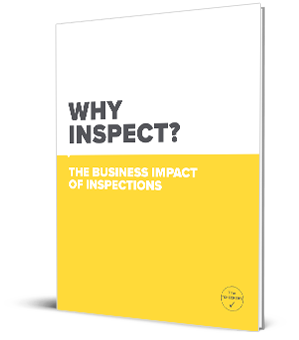Managing risk is critical when valuable assets and safety are on the line. Overlooking risks can lead to costly downtime, safety incidents, or compliance violations. That’s where inspection software comes in—a practical, game-changing tool to help businesses identify, assess, and address risks with confidence.
Here’s how inspection software can enhance your risk management strategy, one step at a time.
1. Identifying Risks with Confidence
The first step to managing risks is knowing where they are. Inspection software streamlines this process by digitizing inspections, allowing teams to collect more comprehensive and accurate data.
With tools like mobile checklists, photo documentation, and real-time data capture, you can spot potential hazards before they escalate. Whether it’s checking the structural integrity of a crane or evaluating the condition of municipal infrastructure, inspection software provides detailed insights that reduce the chance of human error.
2. Assessing Risks in Real Time
Once risks are identified, timely assessment is essential. Inspection software simplifies this by providing automated reporting and data analysis features that let you quickly evaluate trends or recurring issues.
For example, a municipality can use inspection data to prioritize road repairs based on the severity of defects, while a mining operation can flag recurring equipment issues for immediate attention. By focusing on high-priority areas, you can make the most of your resources and address problems before they grow.
3. Proactively Managing Risks
Risk mitigation is most effective when it’s proactive rather than reactive. Inspection software supports this approach by offering features like automated alerts and predictive analytics.
Imagine receiving a notification that a key piece of equipment is nearing its maintenance threshold. By scheduling repairs ahead of time, you can avoid unexpected breakdowns or accidents. Proactive risk management not only minimizes downtime but also keeps employees safe and operations running smoothly.
4. Staying Compliant with Ease
Compliance is at the heart of any effective risk management plan. Inspection software simplifies compliance by ensuring inspections are thorough, consistent, and well-documented.
With auto-generated reports and digital records, you’ll always have the information you need for audits or regulatory reviews. Plus, having easy access to inspection history helps demonstrate your commitment to safety and operational excellence, building trust with stakeholders.
5. Enhancing Team Collaboration
Good risk management is a team effort, and inspection software helps everyone stay on the same page. By centralizing data, it ensures that field inspectors, supervisors, and decision-makers all have access to the same insights.
For example, inspection results can be shared instantly with maintenance teams, allowing them to act quickly. Over time, data analytics from inspections can guide your team in creating smarter, more agile risk management strategies.
Building a Resilient Future
Inspection software isn’t just about avoiding risks—it’s about empowering your business to operate more safely, efficiently, and confidently. By identifying, assessing, and mitigating risks with greater precision, you can protect your assets, your team, and your bottom line.
At The Checker, we’re here to help you every step of the way. Our easy-to-use inspection software is designed to simplify risk management, providing the tools you need to collect reliable data, enhance compliance, and strengthen your operations.
Ready to take your risk management to the next level? With The Checker, you’ll have the confidence and tools to handle risks proactively and keep your business moving forward.











